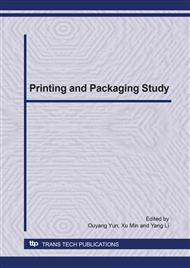p.437
p.441
p.447
p.450
p.454
p.458
p.462
p.466
p.470
Preparation and Characterization of Nanomaterials for Intelligent Temperature Control Package
Abstract:
The low-dimensional VO2 (B) namomaterials were prepared by solvothermal or hydrothermal method. And then the powders were calcined in 623K under high purity N2 (99.999%) atmosphere. The as-obtained samples were characterized by X-ray powder diffraction (XRD), X-ray photoelecton spectroscopy (XPS), Fourier transform infrared spectroscopy (FT-IR), scanning electron microscopy (SEM), transmission electron microscopy (TEM) and high-resolution transmission electron microscopy (HRTEM). The VO2 (M) nanobelts, with several micrometers long, typically 100-150 nm wide, and 20-30 nm thick, were obtained from hydrothermal method. The VO2 (M) petaloid clusters, which were composed of ultrathin flakes with several nanometers in diameter, were prepared by solvothermal reduction of self-synthesized nano-V2O5 and absolute EtOH. The Intelligent temperature control package (ITCP) was prepared by mixing of the modified VO2 (M) nanomaterials, dispersant agent and silicone. It was found that the phase transition of ITCP (Tc) occurred at 341K through FTIR. It was laid the foundation for the application of VO2 (M) in the region of intelligent controlling temperature package.
Info:
Periodical:
Pages:
454-457
Citation:
Online since:
December 2010
Authors:
Price:
Сopyright:
© 2011 Trans Tech Publications Ltd. All Rights Reserved
Share:
Citation:


